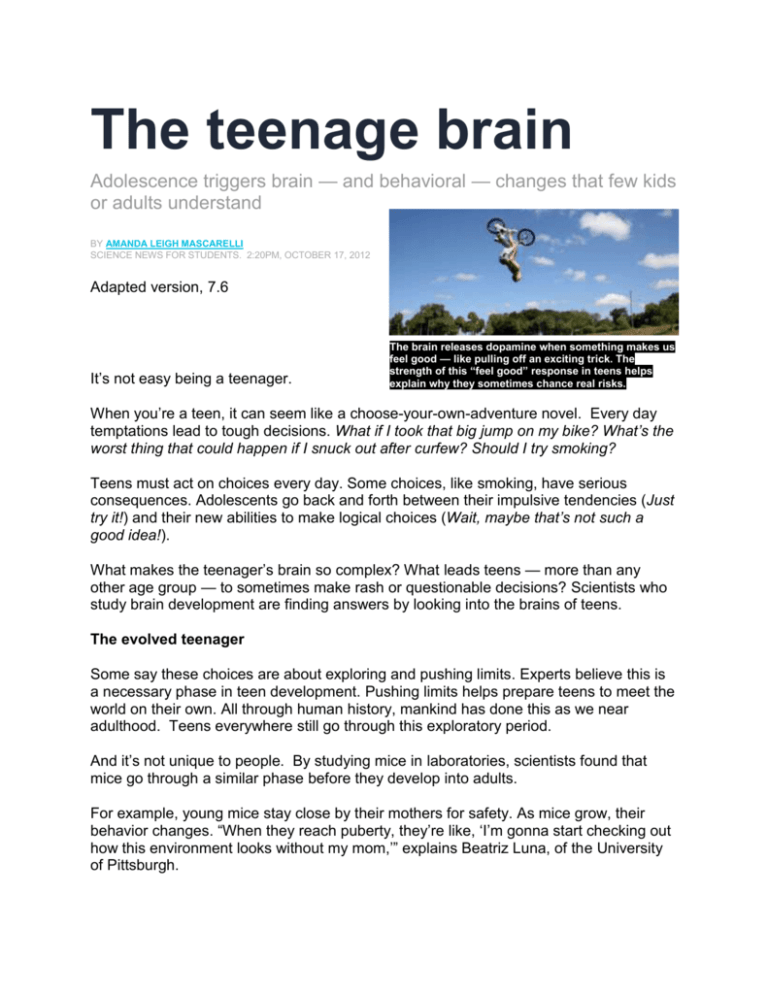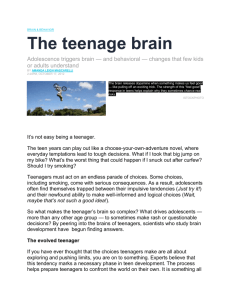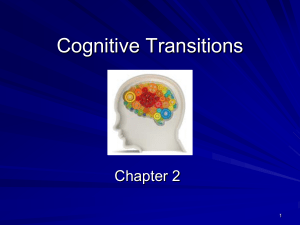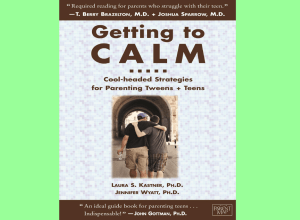
The teenage brain
Adolescence triggers brain — and behavioral — changes that few kids
or adults understand
BY AMANDA LEIGH MASCARELLI
SCIENCE NEWS FOR STUDENTS. 2:20PM, OCTOBER 17, 2012
Adapted version, 7.6
It’s not easy being a teenager.
The brain releases dopamine when something makes us
feel good — like pulling off an exciting trick. The
strength of this “feel good” response in teens helps
explain why they sometimes chance real risks.
When you’re a teen, it can seem like a choose-your-own-adventure novel. Every day
temptations lead to tough decisions. What if I took that big jump on my bike? What’s the
worst thing that could happen if I snuck out after curfew? Should I try smoking?
Teens must act on choices every day. Some choices, like smoking, have serious
consequences. Adolescents go back and forth between their impulsive tendencies (Just
try it!) and their new abilities to make logical choices (Wait, maybe that’s not such a
good idea!).
What makes the teenager’s brain so complex? What leads teens — more than any
other age group — to sometimes make rash or questionable decisions? Scientists who
study brain development are finding answers by looking into the brains of teens.
The evolved teenager
Some say these choices are about exploring and pushing limits. Experts believe this is
a necessary phase in teen development. Pushing limits helps prepare teens to meet the
world on their own. All through human history, mankind has done this as we near
adulthood. Teens everywhere still go through this exploratory period.
And it’s not unique to people. By studying mice in laboratories, scientists found that
mice go through a similar phase before they develop into adults.
For example, young mice stay close by their mothers for safety. As mice grow, their
behavior changes. “When they reach puberty, they’re like, ‘I’m gonna start checking out
how this environment looks without my mom,’” explains Beatriz Luna, of the University
of Pittsburgh.
Luna studies changes that occur in the brain as children develop into adults. She and
other researchers are showing how the teen experience can lead to powerful
advantages later in life. For example, young mice that explore most also live longest.
Jackpot!
What goes on in a teen’s brain? Neuroscientists
[brain scientists] can’t actually peer inside the
brains of living teens. So they do the next best
thing. They scan teen brains while their owners
are thinking, learning and making important
decisions.
Eveline Crone is a psychologist at Leiden
University in the Netherlands. She studies how
the brain develops. She uses a huge, high-tech
instrument called a magnetic resonance imaging
(MRI) scanner. The scanner uses a strong
magnet and radio waves to create detailed
images of the brains of teen volunteers. It is
painless and safe. All that her subjects have to
do is lie back — and play a few games.
A young boy prepares to enter a magnetic
resonance imaging (MRI) scanner. Earplugs
will protect him against the loud noises
produced by the rapid pulses of electricity that
create the MRI’s powerful magnetic fields.
As Crone’s volunteers look up, they see a
mirror that reflects a computer screen.
Then they play casino-like computer
games. Press a button and a slot machine
appears, allowing teens to gamble — and
win. Three bananas in a row? You win a
dollar! “Kids love it. They always want to
come back,” laughs Crone.
Psychologist Eveline Crone studies the teenage brain by
observing which parts of it are most active when
adolescent volunteers in an MRI scanner play casino-like
computer games.
Teens also can play games that require
them to make choices. They might have to
decide whether to pull a trigger, smile at an
attractive face or accept a tempting offer.
Some choices earn them coins or food.
While her subjects play, researchers observe and measure which parts of the teens’
brains are most active. The researchers pinpoint activity by observing how much
oxygen the different brain regions are using. Very active parts of the brain use a lot of
oxygen.
During the risk-taking and rewards-based tests, one region deep inside the brain shows
more activity in teens than it does in children or adults, Crone says. This region, called
the ventral striatum, is often called the “reward center” of the brain. The region can
drive us to repeat behaviors that provide a reward, such as money and treats.
Crone says this difference in teen brain activity “shows that adolescence is a unique
phase in development.”
Tug-of-war
Adolescents are more sensitive and responsive to influence by friends, desires and
emotions, researchers say. It’s one of the characteristics of this stage of life.
Why do teens often respond to those influences with irrational decisions? It is the
presence of a brain chemical called dopamine. The brain releases dopamine when
something makes us feel good, like getting a compliment or finding a $20 bill. Dopamine
levels are highest during adolescence. In teenagers, the strength of this “feel good”
response helps explain why they often give in to impulsive desires.
B.J. Casey is a brain scientist at Cornell University. She tries to understand these
biological patterns in teenagers. In laboratory experiments, she’s noticed more activity
in the ventral striatum whenever a teen must make a risky decision or has a chance at a
reward. However, this brain region is more active between the ages of 13 and 17 than
at any other time in our lives.
And they found something that is really
important. The ventral striatum also
communicates with another brain region. It’s
the one located just behind the forehead, the
prefrontal cortex. The prefrontal cortex is
the brain’s master planner.
The prefrontal cortex is like the boss of the
other regions. It gives instructions and
brain scans highlight the prefrontal cortex,
enables brain regions to talk to each other. It These
just behind the forehead, and the ventral striatum,
guides how we think. It guides how we learn deeper inside the brain.
step-by-step procedures, such as tying our
shoes. Even preschoolers use the prefrontal cortex to make decisions. The prefrontal
cortex’s ability to boss the brain grows as we get older.
Casey’s research shows how the adolescent brain is locked in a tug-of-war. On one
side is the logical pull of the prefrontal cortex (the master planner). On the other is the
impulsive pull of the ventral striatum (the reward system). Although teens can make
good decisions, “in the heat of the moment — even when they know better,” the reward
system can win over the master planner. That can lead to poor decisions, Casey says.
In fact, teens almost cannot resist the promise of a reward, Casey says. “It’s like they’re
pulled toward it.” It even happens if the choice appears illogical.
While this seems to push teenagers toward years of serious risk-taking, it is no mistake.
Researchers believe the teen brain evolved to respond to rewards so teens would leave
the protection of their parents. They had to start exploring their environment to start
developing independence, something they will need in adulthood.
Improved chatter
During adolescence, the prefrontal cortex seems to slow down its development. This
delay serves an important function, says Michael Frank of Brown University. Frank
studies the brain processes that occur during learning and decision making.
The prefrontal cortex is important because it teaches the rest of the brain the rules
about how the world works. So it’s important that the master planner not be too rigid or
strict during adolescence. Instead, it stays open to learning. Only later on in
development can the brain disregard less useful information, Frank says.
Before adolescence, the master planner of the brain isn’t advanced enough to guide all
the other brain regions. That’s because it still doesn’t know the rules of the game. “So
that’s why you have parents to act as your prefrontal cortex,” Frank jokes. Then, all too
often, he says, “you reach adolescence and you don’t listen to your parents anymore.”
Pruned, not shriveled
During adolescence, two key processes seem to play an important role in the maturing
of our brains. One process involves axons, or fibers that connect nerve cells. From
infancy, these fibers allow one nerve cell to talk to another. Throughout the teen years,
fatty tissue starts to insulate [protect] the axons from interfering signals — it is a bit like
the plastic that coats electrical cables.
In axons, the insulating tissue allows information to zip back and forth between brain
cells much more quickly. It also helps build networks that link the prefrontal cortex with
other brain regions. This allows them to work together more efficiently. Eventually, the
master planner can send messages throughout the brain with speed and precision.
The second key process involves synapses. A synapse is like a dock between nerve
cells. Nerve cells communicate by transmitting chemical and electrical signals. Those
signals move through the synapses.
In their first three years of life, children develop a huge number of connections in their
brain circuitry. Then, beginning in adolescence, the brain starts throwing away many of
these connections. Luna, the brain scientist mentioned earlier, compares it to an artist
who begins with a block of granite and carves away any unneeded stone to create a
sculpture. In this case, the brain acts as the sculptor and chops away excess synapses.
Scientists refer to this process as synaptic pruning.
By this stage, the brain has learned which synapses are most useful, Luna explains. So
the brain strengthens the synapses it really needs and eliminates those that either slow
things down or aren’t useful. For example, as people grow older, they become more
proficient in their native tongue. At the same time, they find it harder to learn a new
language. They may have lost some of their earlier language-learning synapses.
Synaptic pruning and other changes that occur in the teen brain give teenagers the
tools to start making decisions on their own — even if they’re bad decisions, says Luna.
“Now you have a brain that says, ‘I can make my own decisions. I can skateboard down
those steps,’” says Luna. “When you’re a kid, you’d check with Mom. But now you have
the prefrontal system that gives you the ability to make decisions.”
All together, these processes help explain the sometimes logical — but often impulsive
or unpredictable — decisions that the teen brain can make. So next time you are torn
over whether a reward is worth a certain risk, remember the tug-of-war that’s taking
place in your brain — and that somewhere in there, you have the tools to make the best
decision.
1719 N Street, N.W. , Washington, D.C. 20036|© Society for Science & the Public 2000 - 2014. All rights reserved.
“Teen Brain” Power Words
adolescence: A transitional stage of physical and psychological
development that begins at the onset of puberty, typically between the ages of
11 and 13, and ends with adulthood.
axon: The long, tail-like extension of a neuron that conducts electrical signals
away from the cell.
evolve: To change gradually over generations.
magnetic resonance imaging (MRI): An imaging technique used to
visualize internal structures of the body.
neuron: An electrically excitable cell that receives, conducts and transmits
messages throughout the nervous system.
prefrontal cortex: The front portion of the brain, just behind the forehead,
which controls executive functions in the brain.
synapse: The junction between neurons that transmits chemical and
electrical signals.
synaptic pruning: The reduction in the number of neurons and synapses
that begins in infancy and is mostly complete by early adulthood.
ventral striatum: A region deep inside the brain known as the brain’s reward
center.







